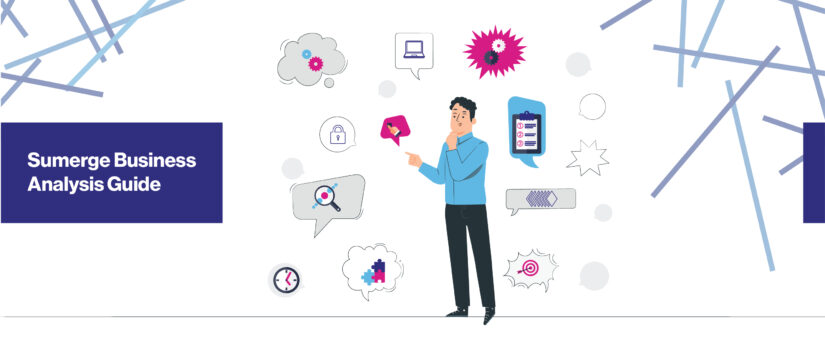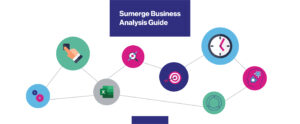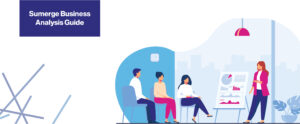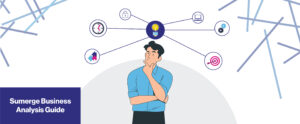
Sumerge Business Analysis Guide: 7 Tips to become a good business analyst
- Posted by Yomna Anwar
- On January 24, 2022
Elicitation, documentation, validation, adaptation and stakeholder conflict mitigation are all things I never thought I was getting myself into when I decided to shift career and become a business analyst just over a year ago. Despite working with all similar concepts theoretically in
Academic research, experiencing them in the industry felt extremely unfamiliar.
I am here to tell you that it is absolutely normal to feel completely lost when kick starts your BA career. At the beginning of my journey, I always wondered if what I was doing was on the correct path and had constant doubts about whether I dug deep enough to find that piece of information or if I am really fulfilling the needs of the stakeholders I mediate between. I kept questioning every little thing I do until I finally had some moments when I felt that my work was good enough and that it was well aligned with that job description of mine (that I eventually completely interpreted). That is when I decided to gather all that I believe were the reasons/tools/techniques that allowed me to experience such moments and that facilitated my growth as a business analyst.
Alright, enough about me now, and let’s get to it!
7 tips that will help you become the best BA version of yourself:
1. Define a process to guide your work
As cliché as it may sound, defining a process that guides my work and day-to-day activities have been super helpful to me especially at the beginning of my career. Before you are about to start a new project/task, define some process to guide you as to how you will
approach, get on with and accomplish your end goal. This process/guide is largely dependent on the nature of the project, your particular role as well as the scope of work you are dealing with. For example, in my previous project, I have found that working in iterations with continuous user story re-visits made the best approach to cater for the ever-changing agile environment and regular customer change requests. Whatever it is that you feel works for your case, just make sure you take the time to define and plan how you will approach that piece of work before you start. It makes all the difference regarding how standardized your day-to-day work suddenly becomes and takes away some of the confusion that we all tend to experience at the beginning of our BA careers.
2. Don’t ASSUME
“Assumptions allow the best in life to pass you by.” – John Sales. Don’t ever assume client expectations, or that this developer would magically understand some requirement without explicitly stating it. Don’t ever assume that this link on a screen is unnecessary or that the order of UI elements won’t make that big of a difference. We all fall into this pitfall of assuming something just to move on with our work, but please save yourself the big hassle of troubleshooting, re-work and the endless meetings to explain yourself and just please do not assume.
3. Visualize, Visualize and Visualize!

Always visualize your understanding of anything. There are plenty of tools that you can use to help you deepen your understanding as well as communicate and align this understanding with the key stakeholders. These tools vary starting from ERDs and state transition diagrams up to mind maps and IQ matrices. Utilize them to enhance the quality of your work output and expand your mental capabilities as an analyst.
4. Create scenarios in your head when analyzing user stories
As you approach any system feature, think of all the following questions:
• What happens before and after this specific user action?
• What is the trigger?
• How does the user access this feature?
• How does the user exit this feature?
• What is the system response?
• What are the logical steps that follow.
These questions really help you dig deep into each requirement and find any gaps that may eventually come up in implementation. Try to use them as a simple guiding checklist just to ensure that you know what you really need to know
5. Present your Business Requirements

When I first started communicating requirements to stakeholders of different backgrounds, I found that aligning our understanding of something was not 1+1=2 kind of simple. This unexpectedly improved when I decided to treat each business requirement as a presentation of its own. Don’t get me wrong, you don’t have to prepare fancy slides every time you explain a feature to a developer on your team. But, be well prepared with any visual/textual material you need to present that requirement. Trust me, giving it the time and effort now will save you a whole lot later
6. Think of the user, ALWAYS!
No matter who is representing your customer, whether it is the IT department, the business analyst or the CEO, the most important stakeholder when it comes to creating your ideal user stories is the end-user. The person you are designing the system for them to use. You want to cater for their every need, and make their life easier (as much as you can, you’re not a genie). This point becomes particularly relevant when you are torn between two decisions, you want to always put yourself in the end user’s shoes and think of what they want and how they would want this system feature to look like or how they would want it to function.
7. Have the capacity for creative association

I kept the best tip for last. The capacity for creative association means your ability to link or associate between two objects/entities/processes…etc. in a rather creative manner. Although some of us – lucky ones- are born with this talent, the good news is that it is a skill that you can grow and develop over time and experience. Meanwhile, it’s important to always keep it in the back of your head to always question if there could be a link there or what would be the output when you merge these two things together and so on. Some
things may seem so far from one another, yet linked somehow. And when you are able to find that connection, it will just take your work to a completely different horizon.
In summary, regardless of where you stand in your BA career now, you can only get better and better if you use the right tools and open your mind to endless possibilities. Try these tips that helped my personal development and boosted my confidence as a business analyst and let us know if they worked for you.




